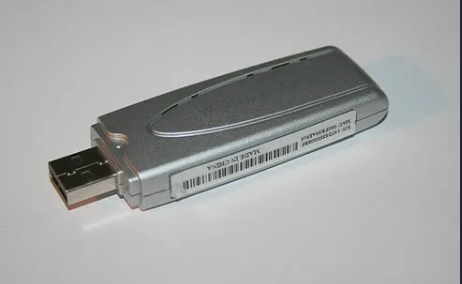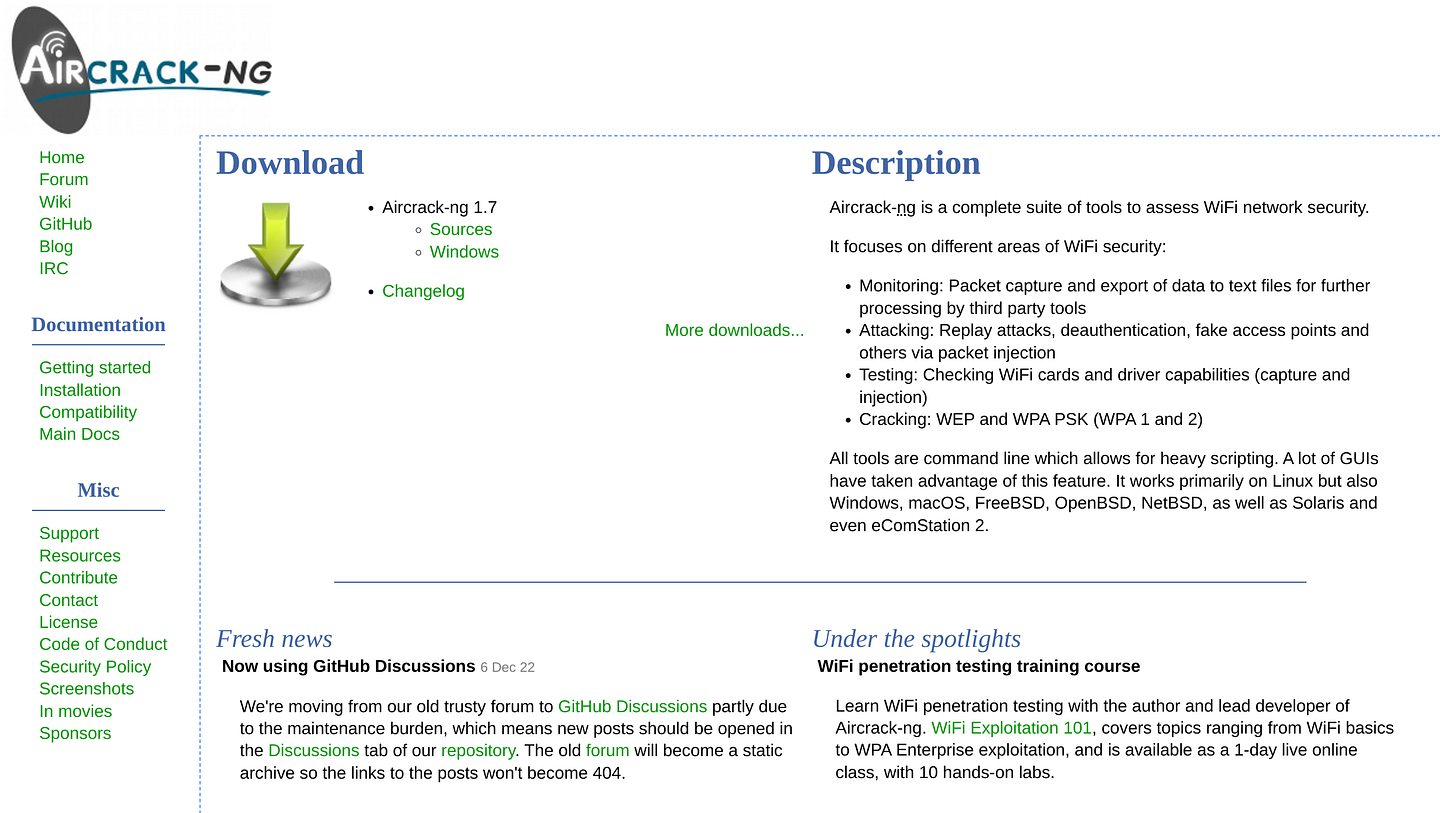Radio Hackers: Monitor Mode Wifi Cards
The Advantages of a Promiscuous mode Wireless Card.
As we’ve begun our journey to exploring the radio spectrum, you might have noticed us refer to a few things consistently. There’s both software and hardware that’s used for a particular reason but often, there’s little explanation as to why it’s important and what the advantages are.
In today’s article we’ll look at demystifying some of this and explore the benefits around why we’d need a monitor mode capable Wi-Fi card.
The Wi-Fi Protocol
Most people who use technology are able to adequately explain what W-Fi is even if they don’t fully grasp the technical details. However as a protocol, there’s more going on than simply providing a means to get your computer or tablet on to the internet. There’s a myriad of different encryption types, protocols and setups that are ripe for exploration. And like anything technology based, there’s a few flaws and weaknesses as well.
In a short summary though, while the requirements for connecting to and using, a Wi-Fi network are pretty basic, to carry out more in depth analysis or war driving activities, you’ll need a card that’s capable of more than simply sending and receiving.
You’ll also find that some programs like Kismet, will require a monitor mode card to be able to use the full functionality and features of the software. This makes it a pretty essential tool for a lot of cyber & info sec based roles.
Monitor Mode
When we use a Wi-Fi cards there’s several different “modes” in which they can be used. While there’s only one that’s particularly useful to us, it’s still worth understanding the other options for how this works.
- Infrastructure Mode: The default connection to and from a device to the network.
- Ad-Hoc Mode: Used for sharing a connection between cards.
- Access Point Mode: Used for sharing and managing a connection.
- Monitor Mode: Used for packet sniffing and network monitoring.
While typically cards will communicate between the device and the host ignoring all other traffic, monitor mode allows an increased level of detection, being capable of scanning all channels. It will also detect all wireless packets in an area instead of network specific ones.
Your monitor mode card will also be capable of transmitting offensive packets.
This means it can interrogate specific devices and even kick them off a network (Deauth) should you choose. It can also scan all channels in a local environment or simply set to detect a single channel or network depending on your needs.
It is important to understand however, that not all Wi-Fi cards will provide monitor mode capability. This capability is often unlocked by the usage is of specialized drivers, and like any piece of software some drivers are more user friendly than others. Therefore, the selection of your card is essential. There’s plenty of resources around selecting a card, however you should pick one that has the capabilities that you need as well as being reasonably easy to configure. 
Finding Compatible Cards
Like many pieces of technology, when your looking for information about compatible cards and reliable information your best bet is to turn to the open source community. With a broad range of users that are passionate about their hobby of choice, you’ll find a welcoming community and large range of information around compatible devices. This means you’ll be able to select a card and get established with a minimum amount of fuss.
One specific piece of information you’ll need to understand about this type of thing is that card capability will revolve around the chip set type. This means to understand this and determine compatibility you’ll need to be able to identify the specific chip set a card will use. This is typically, different from the model number of the card so be wary when your searching for information to ensure you’re looking for the right thing.
One of the best repositories of both knowledge and software is the Aircrack-NG website. Aircrack-NG is a powerful, command line based tool that allows you to use all the features of your wireless cards, quickly and easily.
It also has a large and active community, and maintains a broad database of compatible devices as well as tutorials for beginners to help get their head around using Wi-Fi in a research or offensive capacity.
If this interests you, you can find a tutorial at this link.
Software For Card Testing
Once you’ve configured your card you’ll need to look at software options. Typically, this will vary according to your use case. But there’s typically a few common programs that you’ll find useful to receive the full functionality of your card.
- WireShark: Used for network analysis and traffic interception. Can also be used to generate PCAP files for training or analysis purposes.
- Aircrack-NG: A command line based tool that allows for in depth analysis of Wi-Fi networks. Also includes the ability to send and use offensive packets. It’s an essential tool for anyone who’s serious about gathering information.
- Kismet: Kismet is a wireless Network Intrusion System. It allows detection of wireless mode cards, as well as detection of other, non Wi-Fi based systems. With it’s ability to be scripted and take multiple cards, it’s a brilliant tool for detecting and analyzing devices within an area.

Skill Development & Trouble Shooting
If you’re on a limited budget, or simply undertaking hobby research to further your own knowledge, you may find that you have to be selective in the tools you purchase or understand the benefits behind selecting and using a training tool before doing so. So with that said, let’s look at a few of the reasons why such a card would be a useful additional to your toolkit.
Firstly, selecting a card means you’ll be able to determine compatibility and install your required drivers. So you’ll gain experience in selecting and determining hardware as well as understanding how to select and use the appropriate drivers to run it properly.
Next, you’ll gain experience with the command line as you’ll typically need to run a few commands to switch it over into monitor mode.
Finally you’ll have to ensure your card is compatible with your chosen software, and configured appropriately to run with it. This will give you further insight into using compatible packages, as well as selecting and using Wi-Fi channels while the card is running.
As you can see, there’s a large range of benefits that can come from taking the extra step to analyse wireless transmissions locally. However one of the biggest benefits we’ve left until last to discuss.
To be a Radio Hacker, you’ll need to do more than simply detect, capture and analyse signals in your local area. To fully leverage this aspect of cyber security as well as reach your own goals, you’ll eventually need to transmit signals as well as receive them.
While this can often require an amateur radio license or similar, using a Wi-Fi or ISM devices allows you to experiment with offensive signal transmissions in a controlled and legal environment. While you won’t be able to use the hardware of others, it’s still a great way to understand radio, antennas and signal protocols in a cheap and easy to set up environment.
Radio is fun. Come join our journey and you’ll find out exactly why.
Medium has recently made some algorithm changes to improve the discoverability of articles like this one. These changes are designed to ensure that high-quality content reaches a wider audience, and your engagement plays a crucial role in making that happen.
If you found this article insightful, informative, or entertaining, we kindly encourage you to show your support. Clapping for this article not only lets the author know that their work is appreciated but also helps boost its visibility to others who might benefit from it.
🌟 Enjoyed this article? Support our work and join the community! 🌟
💙 Support me on Ko-fi: Investigator515
📢 Join our Telegram channel for exclusive updates or.
🐦 Follow us on Twitter and
🟦 We’re now on Bluesky!
🔗 Articles we think you’ll like:
- Software Defined Radio & Radio Hacking
- OSINT Unleashed: 5 Essential Tools for Cyber Investigators
✉️ Want more content like this? Sign up for email updates here




























